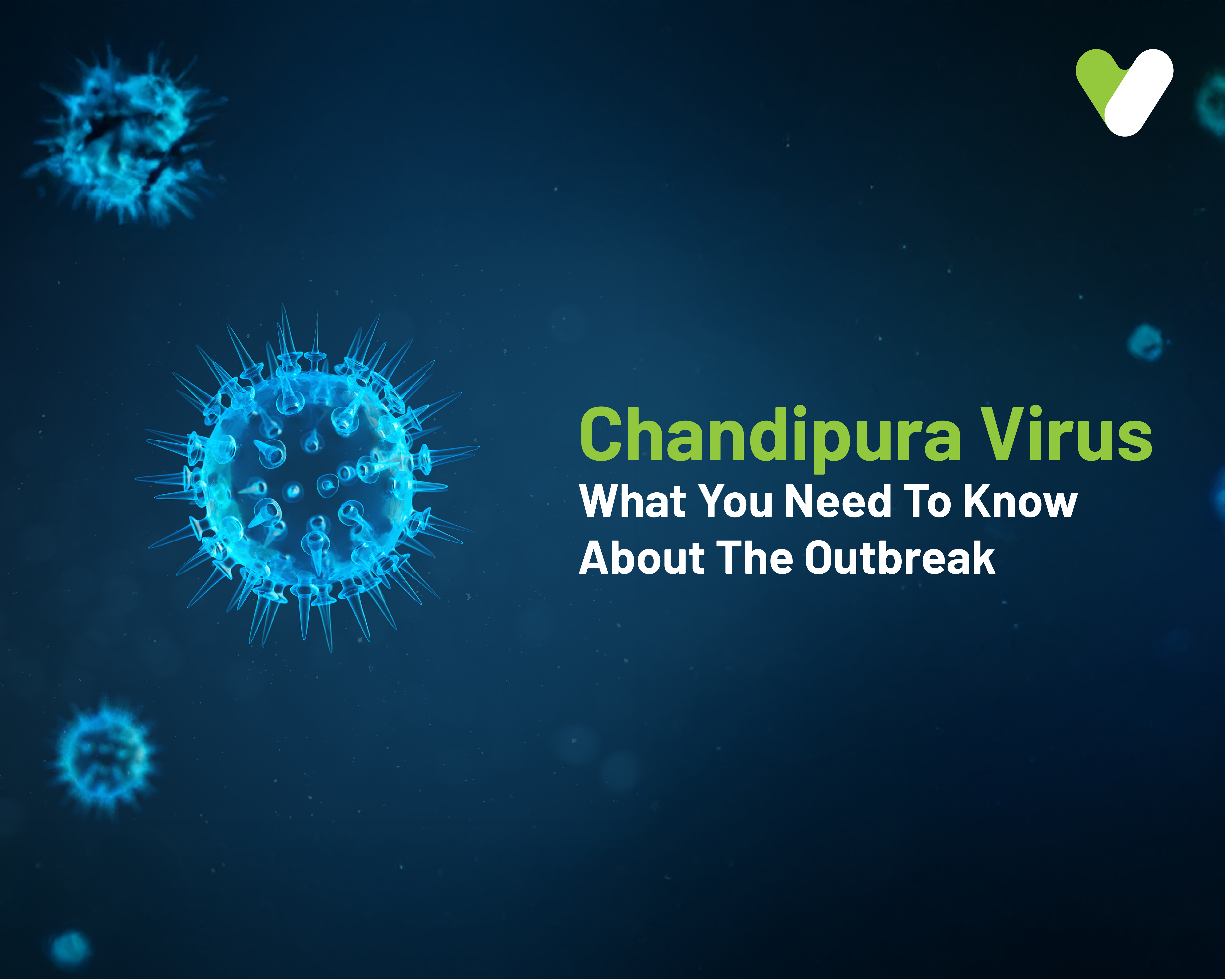Latest entrant in the world of emerging infectious diseases is the Chandipura Virus which has grabbed everyone’s attention world over. Between early June and the middle of August, 2024, acute encephalitis was recorded by the Ministry of Health and Family Welfare (MoHFW), in various parts of India. Out of the 245 reported cases of Acute Encephalitis Syndrome (AES), 64 people were documented to be Chandipura virus - infected patients.
At the moment, India is experiencing an outbreak of the Chandipura virus, which has been reported as the largest outbreak in the last 20 years. The last time it reached such elevated proportions in India was in 2003-2004, when about 300 children succumbed to the disease. Typically, the outbreaks occur every 4-5 years in Gujarat state of India. This year cases of people being infected started rising during early June.
So what exactly is the Chandipura Virus?
Chandipura virus (CHPV) is a type of virus that belongs to the Rhabdoviridae family. Mostly during monsoons, isolated cases of Chandipura virus infection occur in various parts of western, central and southern India. Chandipura virus (CHPV) was first discovered in Chandipura, Maharashtra in 1965, hence the name. The virus has a link with encephalitic disease which is very common in children. Incidentally, the virus belongs to the same family as the dangerous Rabies virus. This virus is definitely infectious, however, there is no strong evidence of human-to-human transmission yet.The fatality rate is 56-75% and up until now no vaccine or medicine has been registered for the treatment. Besides, the monsoon season is causing the outbreak to grow more critical every day.
Reports suggest that the virus originated in India. However, WHO suspects that the virus might be found in other Asian countries as well. They also believe it might be found in Africa too.
How is Chandipura Virus transmitted?
Chandipura virus is vector-borne and is zoonotic. It originates amongst animal populations which can be transmitted to the human inhabitants. Sandflies, mosquitoes, and ticks are the notable vectors that spread Chandipura virus as of now. It can be both indirect or direct contact with the vector. The exactness of the transmission is still under rigorous research and investigation.What are the symptoms of the Chandipura Virus Infection?
Early Symptoms To Look For- Sudden Fever
- Severe headache
- Vomiting
- Seizures
- Altered Mental Status (confusion, disorientation, etc.)
- Encephalitis
- The symptoms may suddenly progress fast. Prominent signs of neurological issues within 24-48 hours of onsetting fever is expected.
- Encephalitis is bad for children. It increases the mortality rate.
- Fever
- Headaches
- Body and muscle pain
- Vomiting
- Convulsions
- Fatigue
Whom does Chandipura Virus affect?
As of now, children are the most vulnerable hosts of this deadly infection. Patients under 15 years and younger are showing rapid progression with this disease. In case of the infamous 2003 Chandipura virus outbreaks too, children were the most infected. Most of the patients were children between the ages of 9 to14 years. They suffered mortality within 48 hours of being admitted to the health care center. In the recent situation as well, the death rate shows mostly children among the victims.Also Read : 10 Home Remedies For Chicken Pox
How is Chandipura Virus infection treated?
Unfortunately, as of now there is no appropriate medicine to treat the Chandipura virus. No antiviral medicine or vaccine for the virus has been registered yet. The only solution is to begin the symptomatic treatment as soon as the early symptoms are noticed. It increases the chance of survival.According to ‘Epidemiology and Management of Chandipura Enciphilities’, managing the airways should be the priority. The patient must look after their breathing. If needed one must opt for oxygen therapy and ventilation as well.
The hydration level inside the body also plays a crucial role. The patient should be given electrolytes to manage proper hydration. Additionally, if the body temperature goes above 106 degrees, one must not delay to secure medical assistance.
The medical centres usually advise testing of serum and cerebrospinal fluid samples for serological and virological study of the infection.
How is Chandipura Virus infection prevented?
One of the most obvious methods is to prevent vector control. Check the sandfly breeding ground near your residential area. You should also use insecticides. Also, see that your home and the neighbourhood promote a healthy, neat, and clear surrounding. What are the types of breeding grounds that you must be aware of?- Holes and crevices in the walls
- Holes in the trees
- Dark and dirty rooms
- Dirty storerooms
- Stables
The responsible authorities are making sincere efforts to prevent the outbreak from spreading. Reports suggest that in the upcoming weeks, further transmission is possible.
According to WHO, the current CHPV situation might turn out to be epidemic. Therefore, demand to take care of the public health system is under priority.
To prevent the Chandipura virus from spreading risk communication and community services need to be engaged. Awareness and knowledge of preventive methods, possible risks and when to visit the doctor needs to be clearly shared amongst the community people.
Also Read : Top 7 Tips for Dengue Fever Treatment
Chandipura Virus Infection : Frequently Asked Questions
- Can an adult get infected with the Chandipura virus? Yes. However, children under the age of 15 are highly vulnerable to being infected with this virus.
- Is Chandipura Virus Contagious? There is no strong evidence of human-to-human transmission of this disease. As of now, sandflies are considered the most common vector of this disease.
- Can the Chandipura virus infection be home-treated? No. Once your fever temperature reaches 106F seek medical attention immediately.
- Acute encephalitis syndrome due to Chandipura virus - India. World Health Organization[Internet]. https://www.who.int/emergencies/disease-outbreak-news/item/2024-DON529. Accessed Aug. 28, 2024.
- DGHS, Union Health Ministry, along with experts reviews the Chandipura virus cases and Acute Encephalitis Syndrome cases in Gujarat, Rajasthan, and Madhya Pradesh. Ministry of Health and Family Welfare(MoHFW) , Govt. Of India [Internet]. https://pib.gov.in/PressReleasePage.aspx?PRID=2034701. Accessed Aug. 26, 2024.
- BL Rao, Atanu Basu, Niteen S Wairagkar, Milind M Gore, Vidya A Arankalle, Jyotsna P Thakare, et al. A large outbreak of acute encephalitis with high fatality rate in children in Andhra Pradesh, India, in 2003, associated with Chandipura virus. The Lancet Journel[Internet]. https://www.thelancet.com/journals/lancet/article/PIIS0140673604169821/fulltext. Accessed Aug. 30, 2024.
- N R Potharaju and A K Potharaju. Is Chandipura virus an emerging human pathogen?. National Library of Medicine[Internet]. https://www.ncbi.nlm.nih.gov/pmc/articles/PMC2065945/. Accessed Aug. 26, 2024.
- India reports largest Chandipura virus outbreak in 2 decades. University of Minnesota[Internet]. https://www.cidrap.umn.edu/misc-emerging-topics/india-reports-largest-chandipura-virus-outbreak-2-decades. Accessed Aug. 28, 2024


